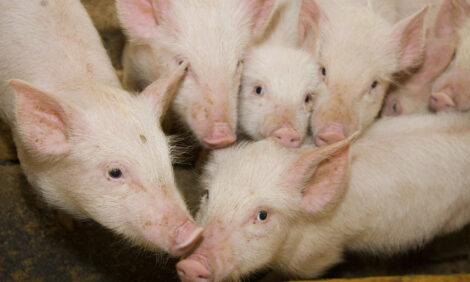Fears of PMWS upsurge as cold weather hits Britain
UK - The jury is still out on whether PMWS is really fading in some parts of England, or whether producers have merely got better at managing pigs in ways that stop it being triggered.
|
Need a Product or service?
|
|
National
Pig
Association
THE VOICE OF THE UK PIG INDUSTRY
NPA is active on members' behalf in Brussels & White-hall, and with pro-cessors, supermarkets & caterers – fighting for the growth and pros-perity of the UK pig industry. |
Any genuine fade should be seen in East Anglia, as this was the region that experienced PMWS first, following overcrowding during the swine fever outbreak in 2000.
But as many people feared, added stress caused by the onset of winter weather appears to have caused a worrying surge, not just in PMWS but also in PDNS, the latter having the potential to cause greater economic damage.
However those producers who have wholeheartedly thrown themselves into batch production seem to be escaping the surge, and some would say they now have PMWS under control.
In Yorkshire, which was hit by PMWS following overcrowding during the 2001 foot and mouth crisis, many producers continue to report widely fluctuating mortality rates.
The disease continues to make its presence felt in Scotland; it is becoming a problem in Northern Ireland (where a recent large outbreak was linked with weaners and semen coming up from the south); and it is spreading in Denmark, where there is some evidence of clusters developing around initial outbreaks.
Data collected by Midland Pig Producers indicates lower PMWS in dam lines compared with terminal lines.
Reports from Canada support the concept of a genetic link to PMWS; in a meeting with a recent NPA delegation, Northern Ireland PMWS researcher Gordon Allen concurred with this, observing that there appeared to be an increased incidence of PMWS in Pietrain material (which is at variance with earlier claims from the continent that Pietrain pigs don't suffer as much as others.)
NPA's Ian Campbell says the Canadian information is consistent with his limited evidence of extra demand from highly muscled, fast growing animals for micronutrients.
It is reasonable, he believes, to expect extra fat levels in body composition to give some protection against shortfall in micronutrients.
"It will be interesting to watch the Danish information emerge as I would expect the hybrid vigour and intramuscular fat in their LW/LR X Duroc progeny to cope with the disease challenge as well as most."
Dr Gordon Allen, who is generally held to be the UK's leading PMWS guru, believes Circovirus 2, married to stress, is the primary cause of PMWS, but he acknowledges that not all information being received supports this model.
Having looked at field and laboratory evidence he feels serotherapy has failed so far to deliver on its early promise.
And with no news from Merial about when a commercially-available PMWS vaccine can be expected, he is currently making up his own vaccine for an in-house trial.
Meanwhile there are reports of some English producers having success with fruit and vegetables in PMWS hospital pens - a variation on the tried-and-tested technique their fathers and grandfathers might have used, of throwing a clod of (micronutrient-rich) soil and grass in with poorly pigs.
"It works with people when they are poorly, so why not with pigs?" suggested one producer, who in the past has found aspirin can be effective against blue ear.
This raises the thought that sugar beet may not contain the same levels of antoxidant as say carrots, but it should be possible to get supplies at give-away prices given this year's bumper crop and current low C-beet prices. And of course it is the perfect manipulable material.
Source: National Pig Association - 10th January 2003

















